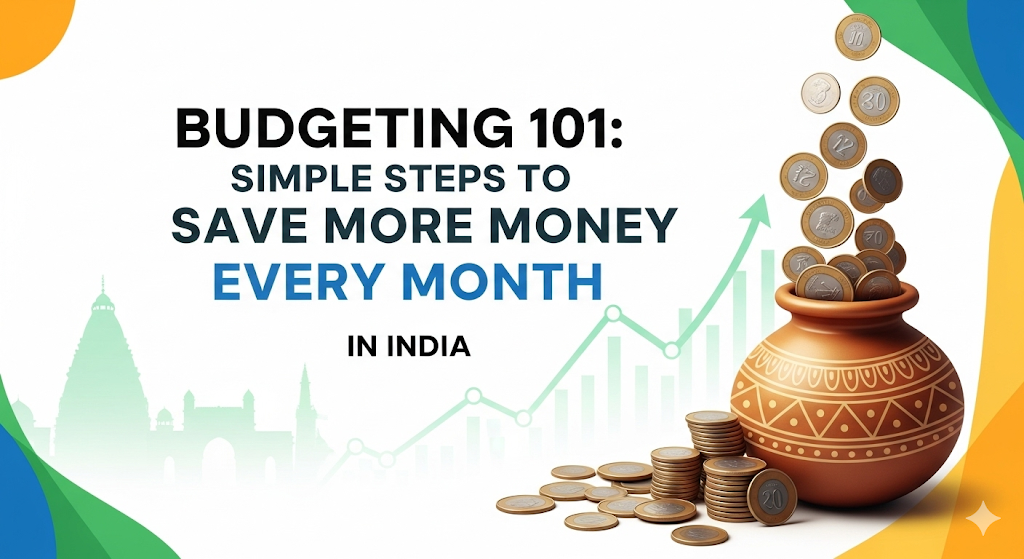Do you ever wonder where all your money goes at the end of the month? If yes, you are not alone. Many people struggle to manage their expenses and often end up spending more than they earn. This is where budgeting comes to the rescue. Budgeting is not about restricting yourself but about managing your money smartly so that you can save, invest, and achieve financial goals.
In this guide, we will break down simple and effective steps to create a budget that works for you and helps you save more money every month.
Why Budgeting is Important
Budgeting is the foundation of financial stability. Without a budget, you might find yourself overspending on unnecessary things and struggling to save for emergencies or future goals. Here’s why budgeting matters:
- Awareness of Expenses – When you track your spending, you know exactly where your money is going.
- Debt Prevention – Budgeting helps you avoid unnecessary borrowing.
- Savings Growth – Allocating money for savings ensures long-term financial security.
- Financial Goals – Whether it’s buying a house, car, or planning a vacation, budgeting helps you reach your goals faster.
Example: If you earn $1,000 monthly and spend $950 without tracking, your savings are just $50. But a proper budget can help you save $200–$300 effortlessly.
Step-by-Step Budgeting Plan
Step 1: Track Your Expenses
The first step is to understand where your money goes. Keep a record of all your expenses for a month, including bills, groceries, subscriptions, and even small snacks. Use apps like Mint, Money Manager, or YNAB to make this process easier.
Step 2: Set Clear Monthly Goals
Decide what you want to achieve with your budget. Some common goals include:
- Saving for an emergency fund
- Paying off debt
- Investing in stocks or mutual funds
- Planning for a vacation
Step 3: Categorize Expenses
Divide your expenses into three categories:
- Needs: Rent, groceries, utilities
- Wants: Entertainment, dining out, shopping
- Savings & Investments: Emergency fund, retirement, stocks
Step 4: Follow the 50/30/20 Rule
A simple and effective budgeting method is the 50/30/20 rule:
- 50% of income for needs
- 30% for wants
- 20% for savings and investments
This method helps maintain a healthy balance between spending and saving.
Step 5: Review and Adjust Monthly
Budgeting is not a one-time task. Review your budget every month, see what’s working and what isn’t, and adjust accordingly. This keeps you in control of your finances and helps avoid unnecessary stress.
Smart Saving Tips
- Automate Savings – Set up automatic transfers to a savings account or recurring deposits.
- Cut Unnecessary Subscriptions – Evaluate if all your subscriptions (Netflix, Spotify, magazines) are essential.
- Meal Planning & Grocery Hacks – Plan meals to avoid impulse buying and reduce food waste.
- Use Cashback & Reward Cards – Get rewards on every purchase to save money indirectly.
- DIY Entertainment – Instead of spending on expensive outings, consider home activities or free events.
Best Tools & Apps for Budgeting
Using technology makes budgeting simpler and more efficient. Here are some top recommendations:
- Mint: Tracks expenses, bills, and budgeting categories automatically.
- YNAB (You Need a Budget): Helps plan every dollar and reduce financial stress.
- Monefy: Easy interface for manual expense tracking.
- Google Sheets Budget Template: Free and customizable for personal use.
These tools not only save time but also give a clear picture of your finances.
Common Budgeting Mistakes to Avoid
- Not Tracking Small Expenses: Tiny daily purchases can add up quickly.
- Being Too Strict: Budgeting is about control, not restriction.
- Ignoring Irregular Expenses: Include annual or quarterly expenses like insurance and subscriptions.
- Not Reviewing Monthly: Without regular check-ins, your budget can become ineffective.
Conclusion
Budgeting is the key to financial freedom. With a clear plan, smart tracking, and consistent review, you can save more money every month and achieve your financial goals faster.
Start today by tracking your expenses, setting realistic goals, and choosing a budgeting method that works best for you. Remember, small consistent steps lead to big results.
